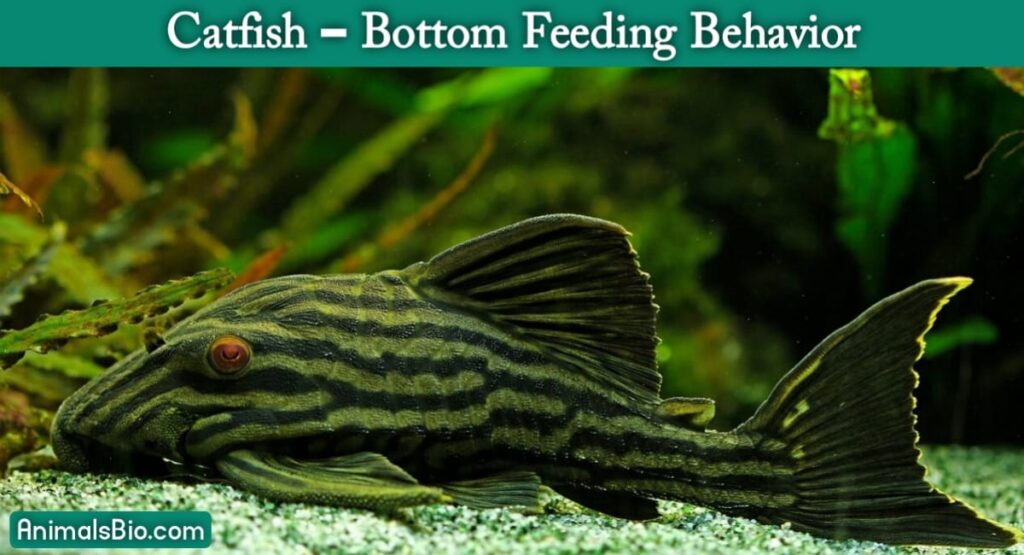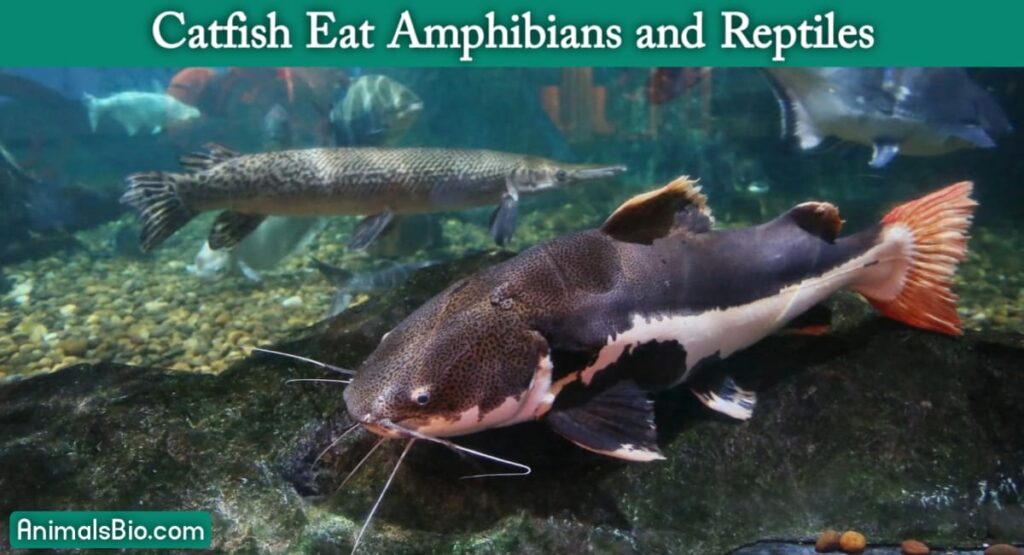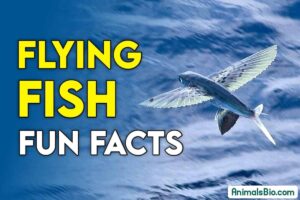Catfish, with their unique appearance and diverse habitats, have long fascinated both anglers and aquarists alike. These freshwater denizens are renowned for their adaptability, not just in terms of habitat but also in their dietary preferences.
From bottom feeders to apex predators, catfish exhibit a remarkable range of feeding behaviors. In this article, we delve into the intricacies of their diet, exploring the diverse array of food items that sustain these aquatic creatures
What do Catfish Eat ?
Catfish are known for their opportunistic feeding behavior, which means they take advantage of various food sources depending on factors like their species, where they live, and what’s around to eat. Understanding their diet is essential for appreciating their role in the ecosystem.
Their food choices can be sorted into different categories, each serving a crucial purpose in their nutrition and how they interact with their environment. By examining these components, we can gain insight into the intricate balance that catfish maintain within their habitats.
Bottom-Feeding Behavior

A notable characteristic of catfish lies in their preference for bottom feeding. With unique sensory organs called barbels, these fish meticulously comb through the sediment at the bottoms of rivers, lakes, and ponds in pursuit of sustenance.
Their feeding habits typically revolve around consuming detritus, algae, decomposing plant material, and tiny invertebrates inhabiting the murky depths.
This specialized feeding behavior not only defines their dietary preferences but also underscores their important ecological role in nutrient cycling and maintaining aquatic ecosystem balance.
Suggested Article : Electric Eel Lifespan, Habitat, Shocking Facts
Suggested Article : Why Are Tigers Going Extinct ?
Invertebrate Delicacies
Apart from scavenging, catfish are also enthusiastic hunters of invertebrates. They have a big appetite for a variety of small creatures like insects, insect larvae, worms, crustaceans, and mollusks.
These aquatic predators are skilled at tracking down their prey with the help of their barbels, which are specialized sensory organs. These barbels can detect even the tiniest movements, enabling catfish to locate and seize their unsuspecting prey, even when visibility is low, such as in murky waters or during nighttime.
This hunting prowess showcases the adaptability and effectiveness of catfish as predators in their aquatic habitats, highlighting their important role in regulating populations of smaller organisms within ecosystems.
Fish on the Menu
Although most catfish usually eat things they find at the bottom of the water, some bigger types of catfish are hunters. Fish such as the flathead catfish and the wels catfish are good examples. They sneak up on smaller fish or go out hunting for food actively.
Fish like minnows, sunfish, and smaller kinds of catfish are often the ones they catch. These big catfish are at the top of the food chain underwater, waiting in the shadows to catch their prey.
Their hunting behavior shows how diverse catfish can be in their feeding habits, with some species adapting to become formidable predators within their aquatic environments.
Amphibians and Reptiles

Catfish are quite versatile when it comes to what they eat. Besides going after creatures in the water, they also hunt amphibians and reptiles if they get the chance.
That means tadpoles, tiny frogs, and even baby turtles and snakes might become a meal for bigger catfish species.
This varied diet shows how adaptable and opportunistic these water-dwelling predators can be. They’re always ready to seize whatever food source presents itself, showcasing their ability to thrive in different environments and make the most of their surroundings.
Vegetarian Options
Although catfish primarily feast on animal matter, some species also munch on plants to balance their diet. They might nibble on algae, munch on aquatic plants, or even snack on fallen fruits or seeds.
This helps them get a variety of nutrients, especially when they can’t find enough animal prey around. In places where there’s not a lot of animal food to go around, these plant snacks become even more important for their survival.
This dietary flexibility highlights the resourcefulness of catfish, as they adapt to different food sources to meet their nutritional needs in diverse environments.
Scavenging for Survival
Catfish are adept scavengers, often feeding on carrion and decaying organic matter. This scavenging behavior not only helps them capitalize on available food resources but also plays a crucial role in nutrient cycling within aquatic ecosystems.
By consuming detritus and decomposing matter, catfish contribute to the breakdown and recycling of nutrients, thus maintaining ecosystem balance.
Aquaculture Feeding Practices
In aquaculture settings, where catfish are raised commercially, their dietary needs are met through specially formulated feeds.
These feeds typically contain a balanced mixture of proteins, fats, carbohydrates, vitamins, and minerals tailored to the nutritional requirements of the fish.
Commercial catfish farming relies on these formulated feeds to ensure optimal growth, health, and productivity of the fish stocks.
Conclusion
The dietary preferences of catfish underscore their role as versatile and opportunistic feeders within freshwater ecosystems. From bottom feeders to apex predators, these fish exploit a diverse array of food sources to sustain themselves.
Whether scavenging for detritus, preying on invertebrates, or hunting fish and other vertebrates, catfish exemplify the adaptability and resilience of aquatic organisms.
Understanding the nuances of their diet not only enriches our knowledge of these fascinating creatures but also sheds light on their ecological importance within aquatic ecosystems.
Source:
Discover boating
Wikipedia Org
Frequently Asked Questions (FAQ)
What Does Catfish Eat at Home ?
When you keep catfish as pets, you have a lot of options for what to feed them. You can give them specially made pellets that have all the nutrients they need.
They also enjoy eating live or frozen invertebrates, like bloodworms or brine shrimp. Sometimes, you can treat them with small bits of fish or shrimp, which they find really tasty.
Giving them a mix of these foods helps keep them healthy and happy. Just like in the wild, catfish are pretty adaptable when it comes to what they eat, so you have plenty of choices to keep them well-fed in your home aquarium.
Where do Catfish Live ?
Catfish inhabit freshwater environments worldwide, including rivers, lakes, ponds, and reservoirs. They can be found in diverse habitats such as muddy bottoms, rocky substrates, submerged vegetation, and deep pools, adapting to a wide range of conditions across continents.
What do Baby Catfish Eat ?
Baby catfish, known as fry, typically feed on microscopic organisms like plankton, small insects, and insect larvae. Specialized commercial fry foods are also available to provide essential nutrients for their growth and development.
How Big do Catfish Get ?
Catfish come in various sizes depending on their species. While some smaller species may only grow a few inches long, larger species such as the Mekong giant catfish can reach lengths exceeding 10 feet and weigh several hundred pounds.
What do Catfish Eat in a Pond ?
In a pond, catfish have a varied diet depending on the available food sources. They primarily feed on bottom-dwelling organisms like insects, insect larvae, worms, crustaceans, and small fish. They also scavenge for detritus, algae, and plant matter present in the pond.






